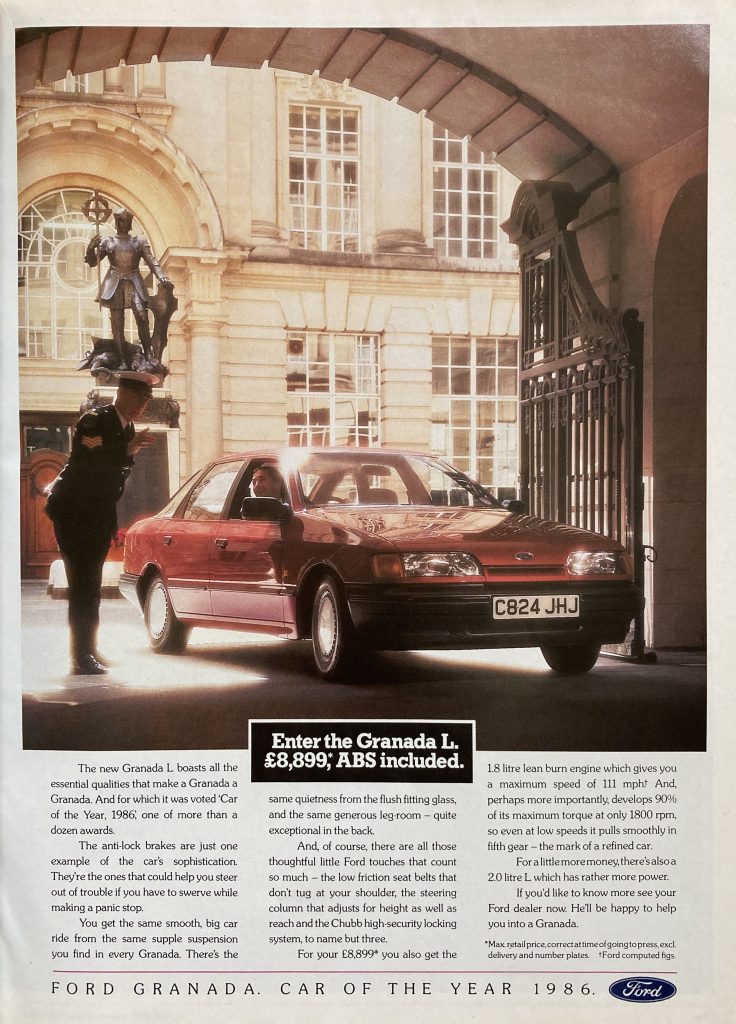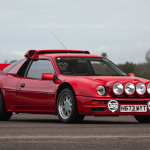You’re looking at a class of car that effectively no longer exists. The decline of the big mainstream saloon (as a general term; the Ford Granada on this page was obviously a hatchback) wasn’t the work of a moment, but it was pretty final.
It’s strange, in fact, that it is French manufacturers that have a reputation for struggling against premium models like the BMW 5-Series and Mercedes E-Class, because they persisted with it much longer than Ford or Vauxhall did.

The Granada, which arrived in 1972, exited this mortal plane in 1998, albeit by then badged Scorpio. Its key rival, the Vauxhall Carlton and then Omega, disappeared in 2004. Yet you could buy a Renault Vel Satis in some markets until 2009, a Peugeot 607 until 2010, and a Citroën C6 until 2012 – and you can walk right into a DS Automobiles dealership today and drive out in a DS9. Ford and Vauxhall’s biggest non-SUVs are the Focus and Astra, and even the Focus isn’t long for this world.
Teleport back to 1986, though, and not only was the big, non-premium saloon still alive and kicking, but the Ford Granada had just taken the European Car of the Year title. Coincidentally, the Carlton would take it a year later and the similarly grand Citroën XM in 1990.
What did people love about these cars? Probably the sense of getting more for your money. The big-name German cars of the era were magnificently engineered (compare the number of E34 5-Series or W124 Mercedes to German-built but less ‘Germanic’ Granadas and Carltons that still survive today and that much is apparent), but they were also legendarily stingily equipped.

Whereas, as this 1986 ad for the entry-level Granada L points out, you could get anti-lock brakes right from the bottom of the range. Ford’s TV ads showed the car safely dodging an errant tractor, while Motor magazine got to test them in action with their long-term Granada, avoiding a car coming around a corner on the wrong side of the road. The author did note, however, that knowing the extra safety net of ABS brakes, they tended to leave a smaller safety net themselves. There’s a lesson in there somewhere when it comes to the accident-avoidance kit loaded into modern cars….
The L’s 1.8-litre carburetted Pinto engine wasn’t exactly a recipe for excitement, even with a manual gearbox and rear-wheel drive (how does 90bhp for just under 1300kg grab you?) but as the ad states, the 2-litre option had “rather more power”, specifically 115bhp with very little weight penalty. Motor praised the car’s handling and cruising ability too, though their car was let down by poor reliability.
For an ‘L’ the Granada in the ad even looks fairly classy, if somewhat bland next to the BMWs and Mercedes of the time – Ford clearly took early criticism of the Sierra to heart and its Granada had a much gentler, less shocking interpretation of the ‘jelly mould’ look. Certainly less shocking than 1994’s Scorpio.
But given not a single car in the Granada’s class has taken the Car of the Year title since the XM in 1990 (the Vauxhall Insignia and VW Passat both won in the 2000s, but those are technically a class size smaller), even the Granada was living on borrowed time. It might have been better value than a 5-Series, but only one of them is still around today.









